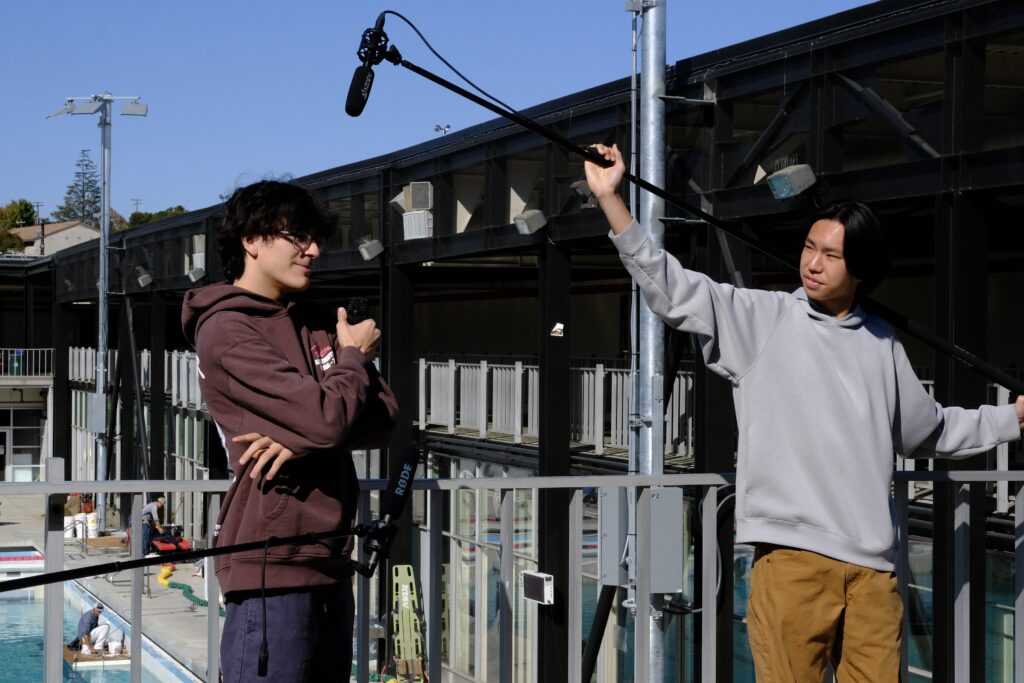
Aila Liu
Every Friday, students and teachers watch video announcements during fourth-period. Though most only see short video segments, producing these announcements takes weeks of preparation.
“It takes a lot of effort to even put [30 seconds] of the production [together],” said sophomore and video production student Mason Ellis Layug. “I feel like people don’t realize how much effort is put in into even a little clip.”
The class is split into groups, with each one producing one video, with three segments and school announcements, every six weeks. The first step is getting ideas and finding people with stories willing to talk on camera.
“[The] initial two weeks are mainly just to brainstorm who we’re going to [interview and] what we’re going to do,” said senior and video production group leader Tara Sardana. “[It] takes time [and] effort to find something interesting to share with the rest of the school.”
After preparation, the team begins gathering interviews and producing the video itself.
“[We spend] most of the time [getting] our interviews [and the] clips that we’re going to [use],” Layug said. “[Then,] we do the editing, [finalize] what we already have … and we film the anchors.”
Each part of the process takes effort, and fitting the week’s announcements require effective time management.
“[On] week six of … [a team’s] production, they really should be completely done and just tweaking things,” said digital photography and video production teacher Nicholas Carrillo. “When it comes to producing a show or writing a paper, going longer is always easier than making it concise and fitting into a specific timeline.”
While the steps seem simple, the process to create a good segment is much tougher.
“There [are] a lot of things that need to be done, and if we’re falling a little bit behind … we all get together and reevaluate what we need to do,” said senior and video production student Aaron Sanchez.
The team must work together to resolve issues efficiently to ensure the video releases on time.
“If a segment isn’t produced right, or if a segment isn’t polished, then it doesn’t get put in,” Carrillo said. “If there [are] multiple segments that aren’t done, or if interviews [and B-rolls are] missing, then we have a real problem.”
Sanchez credits a respectful team environment for their success.
“When people need help, we don’t shame them,” Sanchez said. “We embrace it, because we’re a group.”
Seeing weeks of hard work coming to life on screen every Friday is a rewarding moment for the students, even inspiring some to follow bigger dreams.
“When I was younger, I always used to like making cool YouTube videos,” Sanchez said. ”I never actually sent them out, but [I was] … happy [making them]. I already had editing experience, so I always thought ATV would suit me.”
In the future, ATV aims to increase students’ exposure to broadcast journalism by attending the Student Television Network’s annual convention in Long Beach, California.
“I think it’ll be eye-opening for students to see other students work on a national level,” Carrillo said. “Hopefully we’ll up our program’s game and get the [students] excited about a career or even a college course that they can take to further their interest in video production.”
For now, the video production team will continue producing segments each Friday, informing students about Aragon happenings.



